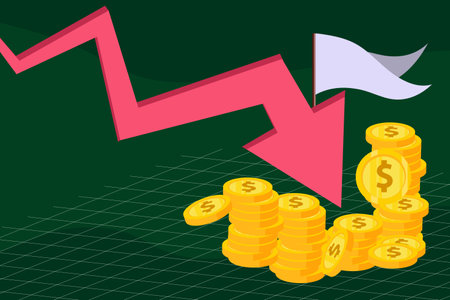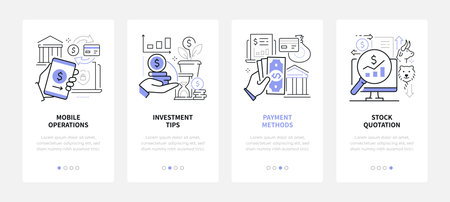1. Understanding Default Rates in Indian P2P Lending
When stepping into the world of peer-to-peer (P2P) lending in India, one of the first things you’ll hear about is “default rates.” But what exactly does this mean in the Indian context? In simple terms, a default occurs when a borrower fails to repay their loan on time or at all. For lenders and platforms alike, understanding how often this happens—the default rate—is crucial for making informed decisions.
Default rates are typically calculated as the percentage of total loans that remain unpaid after a specified period, usually 90 days past the due date. For example, if out of 1000 loans given via an Indian P2P platform, 50 are overdue by more than 90 days, the default rate would be 5%. It’s important to note that different platforms may have slightly varied ways to define or calculate defaults, so always check their methodology.
Over the last few years, Indian P2P platforms have seen fluctuating default rates due to multiple factors. Economic slowdowns, job losses, and even changing regulatory landscapes can affect borrower behaviour. Recently, many platforms report default rates ranging between 4% and 8%, depending on their risk assessment models and borrower segments. Urban borrowers might show slightly lower default rates compared to rural areas due to higher financial literacy and stable income sources.
For new investors, keeping an eye on these trends is essential. A rising default rate may indicate increasing financial stress among borrowers or lapses in credit assessment practices. Conversely, a steady or declining rate could mean that both platforms and borrowers are adapting well to market conditions. By understanding these numbers in the Indian context, you equip yourself with the knowledge needed for smarter investment decisions in P2P lending.
2. Key Factors Influencing Defaults in India
Understanding why borrowers default on Indian peer-to-peer (P2P) lending platforms is crucial for both investors and platform operators. There are multiple factors unique to the Indian context that drive default rates, including the economic landscape, cultural perceptions of credit, and significant regional differences. In this section, we will explore these factors in detail.
Economic Landscape: The Foundation of Default Risk
India’s diverse economy means borrowers come from different financial backgrounds. Fluctuations in employment, especially in unorganized sectors, directly impact a borrower’s ability to repay loans. For instance, an auto-rickshaw driver or small shop owner may face irregular income due to seasonal demand or local disruptions. Additionally, inflation and sudden medical expenses often lead to missed payments.
| Economic Factor | Impact on Default Rate |
|---|---|
| Irregular Income | High risk for missed EMIs (Equated Monthly Installments) |
| Unemployment | Immediate spike in defaults post-job loss |
| Medical Emergencies | Often leads to loan diversion for non-loan expenses |
| Inflation/Price Rise | Reduces disposable income, affecting repayment capacity |
Cultural Attitudes Towards Credit: A Unique Perspective
The Indian approach to borrowing and debt is deeply rooted in cultural values. In many communities, taking a loan is still seen as undesirable unless absolutely necessary. This can result in two contrasting behaviors:
- Reluctant Borrowers: Some only borrow for emergencies and prioritize quick repayment.
- Over-optimistic Borrowers: Others may underestimate their repayment abilities, influenced by societal pressure to maintain social status through visible consumption.
This cultural backdrop affects how borrowers perceive their obligation towards digital P2P lenders versus traditional banks or local moneylenders, sometimes leading to lower moral commitment to online contracts.
Regional Differences: Not All States Are Alike
The diversity across Indian states also plays a major role in default patterns. Urban areas with higher financial literacy tend to have lower default rates compared to rural or semi-urban regions where formal credit history is rare.
| Region Type | P2P Default Tendency | Main Contributing Factors |
|---|---|---|
| Urban Metros (e.g., Mumbai, Bengaluru) | Lower default rates | Better financial awareness, stable jobs, digital penetration |
| Semi-urban Towns (e.g., Nashik, Indore) | Moderate default rates | Mixed income sources, evolving credit culture |
| Rural Areas (e.g., Bihar, Uttar Pradesh hinterland) | Higher default rates | Agricultural dependency, informal work, lack of documentation |
The Takeaway for Investors and Lenders
If you are considering investing or operating in India’s P2P lending sector, understanding these key influencing factors can help you assess risk better and make informed decisions tailored to the Indian market’s realities.

3. Legal and Regulatory Framework
In India, the peer-to-peer (P2P) lending sector operates under a comprehensive set of laws and regulations designed to ensure both borrower protection and lender security. The Reserve Bank of India (RBI) is the key regulator for P2P platforms, and its guidelines shape how defaults are managed and recovery processes are implemented across the country.
RBI Guidelines for P2P Lending Platforms
The RBI’s Master Directions, issued in 2017 and updated periodically, classify P2P platforms as Non-Banking Financial Companies – Peer to Peer Lending Platforms (NBFC-P2P). According to these rules, every P2P company must register with the RBI and adhere strictly to its compliance requirements. The regulations cap the amount an individual can lend or borrow across all platforms at ₹50 lakh, ensuring risk is distributed and not concentrated among a few players.
Default Management Protocols
P2P platforms are required to disclose their recovery policies clearly. They cannot guarantee returns or use coercive recovery tactics. Instead, platforms facilitate communication between lenders and borrowers when defaults occur. Legal notices, arbitration, and reporting defaulters to credit bureaus are common steps in the process. However, unlike traditional banks, P2P companies are limited in the enforcement actions they can take directly; much depends on the contractual agreement between parties.
Borrower Rights and Protections
Indian law emphasizes fair treatment of borrowers. RBI mandates that P2P platforms provide complete transparency on loan terms, applicable charges, and default implications before disbursal. Borrowers have the right to privacy; their information cannot be shared without consent except with credit bureaus or as required by law. Additionally, there are grievance redressal mechanisms overseen by RBI-appointed officers within each platform, ensuring that both lenders’ and borrowers’ complaints are addressed in a timely manner.
To sum up, India’s legal and regulatory framework aims to create a balanced ecosystem: it encourages fintech innovation while protecting participants against undue risks. Anyone considering lending or borrowing on a P2P platform should stay updated with RBI notifications and understand both their rights and obligations under Indian law.
4. Recovery Process Step-by-Step in India
When borrowers default on peer-to-peer (P2P) lending platforms in India, the recovery process follows a structured workflow designed to maximize the chances of recovering outstanding dues while respecting local culture and regulatory guidelines. Here’s a step-by-step guide to how Indian P2P platforms typically approach recovery:
Step 1: Initial Reminder and Soft Follow-ups
Recovery begins with gentle reminders. Most Indian borrowers respond well to polite communication, so platforms start with SMS, emails, and phone calls in multiple languages—often including Hindi and regional dialects. These messages are friendly, reminding the borrower of their obligation and offering support if they are facing genuine hardship.
Step 2: Escalated Communication
If initial reminders don’t work, the tone becomes firmer but still respectful. Platforms may increase the frequency of calls and send formal notices. In many cases, family involvement is considered effective in Indian society, so some platforms request a discussion with a family member (with borrower consent), leveraging the social importance of reputation.
Step 3: Field Visits
For persistent defaulters, trained field agents may visit the borrower’s residence or workplace. These visits are conducted with cultural sensitivity—agents are instructed to avoid public embarrassment or aggressive behavior, as maintaining “izzat” (honour) is crucial in Indian culture.
Step 4: Legal Notice & Credit Bureau Reporting
If dues remain unpaid, legal notices are sent according to RBI guidelines. Borrowers are informed that defaults will be reported to credit bureaus like CIBIL or Experian, affecting their credit score—a significant deterrent as credit reputation grows more important in urban India.
Recovery Process Workflow Table
| Step | Description | Cultural Nuances |
|---|---|---|
| 1. Initial Reminders | SMS/Email/Call reminders in local language | Polite tone; empathy for hardships |
| 2. Escalation | Formal notices; increased contact frequency | Family involvement; respect for privacy |
| 3. Field Visit | In-person visit by agent | Avoid public shaming; maintain “izzat” |
| 4. Legal Action & Reporting | Legal notice; report to credit bureaus | Highlight long-term impact on reputation |
Local Process Nuances and Best Practices
P2P platforms must comply with RBI regulations throughout the recovery process. Many also partner with specialized recovery agencies familiar with local customs, ensuring each step aligns with community norms. Building trust is key—offering settlement options or restructuring plans can be effective, especially when handled with patience and respect.
This culturally attuned approach not only increases recovery rates but also helps P2P lenders maintain their reputation among borrowers and regulators alike.
5. Challenges and Limitations in the Indian Recovery Process
When we talk about the recovery process in Indian peer-to-peer lending, it’s important to recognise the unique ground realities that set India apart from other markets.
Legal Loopholes and Delays
Indian lenders often struggle with legal loopholes that make loan recovery a prolonged and uncertain journey. The judicial system, though evolving, is still slow and sometimes lacks clear frameworks for digital lending disputes. Many times, borrowers exploit these gaps to delay or avoid repayment. For P2P platforms, initiating legal action can be time-consuming and expensive, especially for small-ticket loans that are common in India.
Borrower Unreachability
An all-too-common challenge is the sudden unreachability of borrowers. In India, many borrowers change their phone numbers, addresses, or even relocate to different cities without notice. Due to limited KYC documentation or incomplete address proofs—especially among rural or semi-urban populations—lenders face a tough task in tracking down defaulters. This is compounded by the vastness and diversity of India’s geography.
Social Stigma Associated with Loan Default
Defaulting on a loan carries significant social stigma in many parts of India. While this can act as a deterrent for some borrowers, it also leads others to go underground rather than face community embarrassment. Families may intervene, but sometimes they prefer to shield the defaulter rather than cooperate with recovery agents.
Lack of Centralised Credit Information
Unlike developed countries where credit histories are robust and widely accessible, many Indian borrowers have thin or non-existent credit files. This makes it difficult for P2P lenders to assess risk accurately and pursue effective recovery strategies when defaults occur.
Cultural and Language Barriers
India is home to hundreds of languages and dialects, making communication a significant challenge during recovery attempts. What works in one region may not work in another due to cultural sensitivities or linguistic differences.
In summary, while the Indian P2P lending landscape offers great opportunities, its recovery process is fraught with challenges rooted in local realities. Understanding these limitations is crucial for both new and seasoned lenders seeking sustainable returns.
6. Best Practices for Lenders and Investors
Understand the Indian P2P Landscape
Before investing, take time to study how peer-to-peer lending operates in India. Regulations by the Reserve Bank of India (RBI) set guidelines, but each platform has its unique approach to borrower assessment and recovery. Stay updated with RBI circulars and platform disclosures to avoid surprises.
Mitigate Risks with Smart Diversification
Don’t put all your eggs in one basket. Spread your investments across multiple borrowers, sectors, and loan amounts. This is especially important in India, where economic conditions vary regionally. Diversification helps you absorb the impact if a few borrowers default.
Check Borrower Profiles Thoroughly
Look beyond just the credit score. Evaluate the borrower’s profession, location, repayment history, and purpose for borrowing. In India, salaried professionals and government employees usually have more stable incomes compared to seasonal workers or those from unorganized sectors.
Leverage In-Platform Analytics
Many Indian P2P platforms provide risk ratings and detailed analytics for each borrower. Use these tools to make informed decisions rather than relying on gut feeling or word-of-mouth recommendations.
Cultural Sensitivity When Engaging Borrowers
Remember that personal reputation holds strong value in Indian society. If you need to communicate with borrowers regarding repayments, do so respectfully and professionally. Avoid aggressive tactics, as they can backfire due to the importance of “izzat” (honour) in local communities.
Participate in Community Forums
Join investor forums or WhatsApp groups related to your chosen platform. Peer discussions help you stay aware of trends, potential risks, and best practices shared by experienced Indian investors.
Stay Patient and Monitor Recovery Processes
If defaults occur, trust the platform’s legal recovery mechanisms but also follow up regularly for updates. The legal process in India can be slow; patience and persistence are key.
Keep Records for Taxation
P2P income is taxable under Indian law. Maintain clear records of your investments, interest earned, defaults, and recoveries. This will make annual tax filings easier and prevent hassles during scrutiny.
Continuous Learning is Key
The Indian P2P landscape evolves quickly with new RBI norms and fintech innovations. Attend webinars, read blogs by seasoned investors, and never stop updating your strategies to ensure long-term success in this exciting space.
7. The Road Ahead: Future of Defaults and Recovery in Indian P2P
The Indian peer-to-peer (P2P) lending landscape is rapidly transforming, with new trends and technologies paving the way for a more robust and resilient ecosystem. In this final section, let’s discuss how the sector is evolving and what can be done to further reduce default rates while strengthening recovery processes for both lenders and platforms.
Evolving Trends Shaping Indian P2P Lending
Indian borrowers and investors are becoming increasingly tech-savvy, and regulatory frameworks are maturing. Platforms are now moving beyond metros, tapping into Tier 2 and Tier 3 cities, where credit demand is high but access to traditional banking remains limited. With increased digital literacy, borrowers are more aware of their financial responsibilities, which helps in lowering default risks over time.
Technological Interventions: The Game Changer
Data-Driven Credit Assessment
P2P platforms are leveraging advanced analytics, artificial intelligence (AI), and machine learning (ML) to assess borrower risk profiles more accurately. By analysing alternative data sources—such as utility payments, mobile usage, and social media behaviour—these systems provide a holistic view of creditworthiness that goes beyond traditional CIBIL scores.
Automated Collection Mechanisms
Automated reminders via SMS, WhatsApp, and app notifications have already improved timely repayments. Some platforms are experimenting with UPI-based auto-debit features for EMI collections, making repayments seamless for borrowers and reducing chances of accidental defaults.
The Way Forward: Strengthening Default Management & Recovery
Collaborative Industry Efforts
Industry-wide databases sharing borrower histories across platforms could help curb serial defaulters. Additionally, collaboration with fintech associations and credit bureaus will bring more transparency and accountability to the ecosystem.
Legal & Regulatory Innovations
Faster dispute resolution mechanisms—like digital arbitration or online Lok Adalats—can support lenders in recovering dues quickly. The Reserve Bank of India’s ongoing updates to regulations ensure that P2P lending stays safe for all participants, while encouraging innovation.
Financial Literacy Drives
Increasing borrower education through multilingual content, local workshops, and user-friendly onboarding can make a big difference. When borrowers fully understand loan terms and consequences of defaults, they’re more likely to stay on track.
A Promising Yet Responsible Future
The future of Indian P2P lending lies in smart adoption of technology, proactive risk management, and an unwavering commitment to customer trust. As stakeholders come together to address challenges head-on—with both empathy and efficiency—the sector can look forward to lower default rates and stronger recovery systems that benefit everyone involved.


